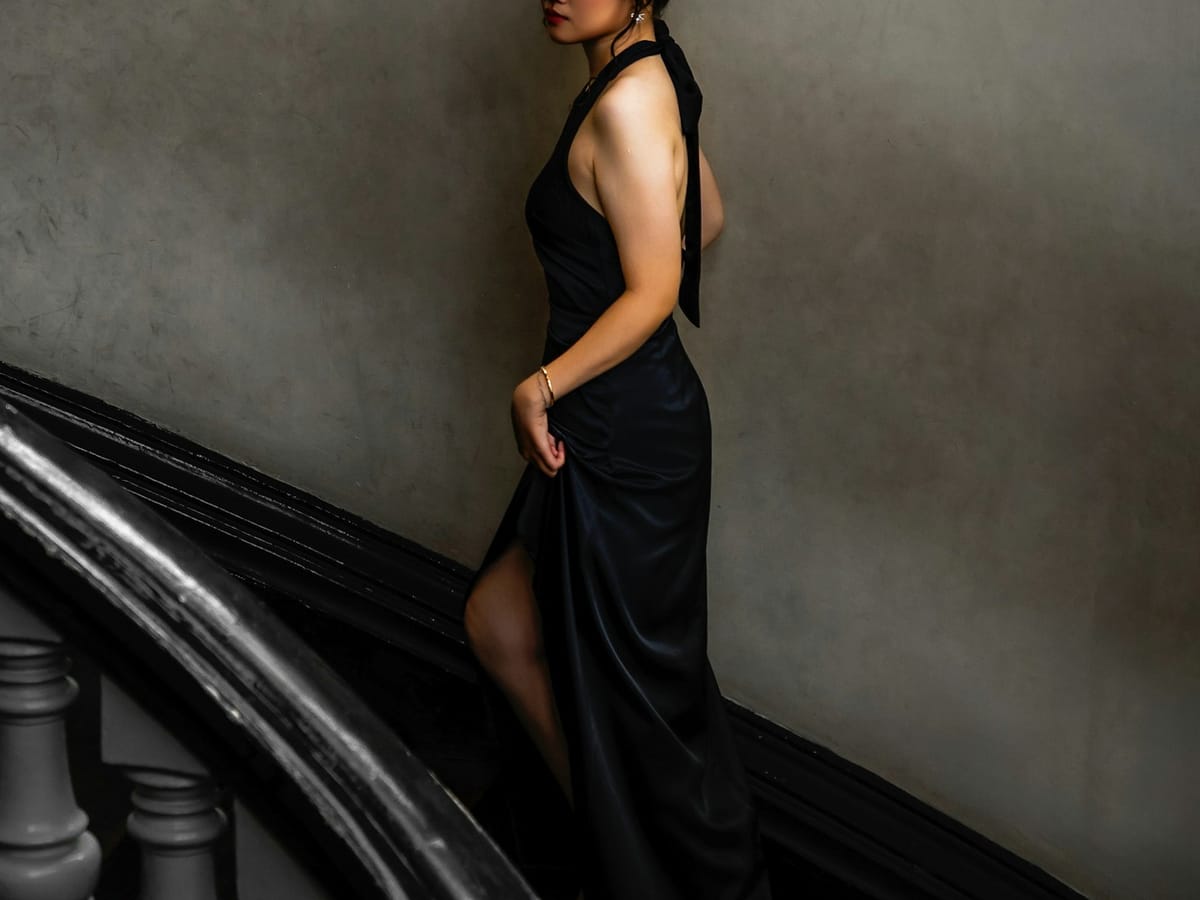About the Dark Feminine: Psychology Meets Practical Wisdom
Beyond burnout and perfectionism: how the dark feminine helps restore energy, boundaries, and a deeper sense of self

There’s a word that makes many of us flinch: dark. Especially when it’s paired with feminine. Dark feels like something to avoid, something suspect, something to keep at arm’s length if we want to stay competent, reliable, and in control.
But in psychology, “dark” doesn’t mean evil. It means hidden. The dark parts are parts of ourselves we’ve pushed down, put away, or denied because they felt too much. Too angry. Too ambitious. Too evocative. Too messy.
For high-achieving women, this often shows up as over-functioning on the outside while quietly running on fumes inside. We polish the light side of the feminine—the caring, the nurturing, the dependable—because it wins approval and keeps life moving. But the cost of ignoring the dark feminine is real: burnout, resentment, disconnection from desire, a gnawing sense that we’re living half a story.
This post is an invitation to turn toward what’s been hidden—not as a dramatic rebellion, but as an act of integration. The dark feminine is not here to derail your life. She’s here to give you back your wholeness.
What is the dark feminine versus light feminine?
When we talk about the dark feminine, we’re not invoking something mystical or exotic. The idea of the dark feminine is actually a well-recognized concept in depth psychology. Think of the concept of the dark feminine as the feminine side of the shadow: the dark feminine encompasses the traits, instincts, and energies that don’t fit neatly into the roles that women usually get praised for.
In many professional women’s lives, the “light feminine” gets all the attention. The light feminine self is the collaborator, the caregiver, the sweet one. She's the one who smooths rough edges and keeps things moving. She’s relational, empathetic, dependable. And her role is genuinely needed.
But there’s another side. The dark feminine holds what’s powerful but often inconvenient or brushed aside in modern life:
- Fierce boundaries. The ability to say no without apology.
- Righteous anger. The energy that signals when a value has been crossed.
- Desire and sensuality. Not performative, but grounded and authentic.
- Creative destruction. The clarity to end what no longer works, even if others disapprove or don't understand.
Here are a few examples of light feminine versus dark feminine qualities contrasted:
| Light Feminine Energy | Dark Feminine Energy |
|---|---|
| Caring for others | Caring for yourself |
| Innocent | Experienced |
| Sweetness | Glamour |
| Curiosity | Competence |
| Putting others first | Putting yourself first |
| Acceptance | Advocacy |
| Charm | Seduction |
| Humility | Confidence |
| Sadness | Anger |
From a clinical perspective, the qualities of the dark feminine live in what Jung called the shadow—the unacknowledged parts of ourselves that still influence us whether we admit them or not. When integrated, the dark feminine doesn’t make you less professional or less caring. She makes you more whole, more congruent.
You might recognize her in feminine archetypes: the Artemis archetype who focuses her aim without waiting for consensus, the Aphrodite archetype who trusts her instincts over external approval, the Hestia archetype who protects your time and inner space. These dark feminine archetypes aren't roles to perform, but are names we give to tendencies within yourself. Those parts of you that are quietly (or urgently) giving you permission to live in attunement with your true desires. To stop apologizing and feeling like an imposition. To take up space.
The point isn’t to replace the light feminine with the dark feminine. It’s to hold both. To be tender and fierce, compassionate and boundaried, nurturing and wild. That paradox is where resilience grows.
The cost of ignoring the dark feminine
When the dark feminine is pushed aside, she doesn’t disappear. She shows up in other ways—through the body, through our moods, through patterns we can’t quite break.
Clinically, we see this in three main areas:
1. The physical body.
Chronic tension in the shoulders and jaw. Fatigue that doesn’t lift, even after rest. Autoimmune flares that seem to arrive whenever you’re overextended. Suppressed anger, unmet needs, and unspoken boundaries often show up in the nervous system and immune system.
2. Emotional fallout.
When the dark feminine is silenced, feelings like resentment, irritability, and numbness creep in. You may find yourself snapping at small things or, just as often, unable to feel much of anything at all. The cost of perpetual calm and control is emotional flatness.
3. Relational strain.
Over-giving without reciprocity. Saying yes when your whole body wants to say no. Finding yourself in patterns where you take care of everyone else while your own needs go unmet. Without the dark feminine’s clarity and fierceness, relationships can tilt into imbalance.
For high-achieving women, these costs often accumulate quietly. From the outside, everything still looks polished. Inside, though, there’s a low-grade hum of exhaustion, sometimes paired with a private fear: Is this just how it has to be?
It doesn’t. The very signals you may be trying to suppress—anger, desire, grief, the urge to draw a line—are not liabilities. They are messengers. They’re pointing toward where the dark feminine is needed most, not as a saboteur but as an ally.
Dark Feminine & Feminine Archetypes
One of the most accessible ways to understand the dark feminine is through archetypes—universal patterns of human experience that Jung described as part of the collective unconscious. Archetypes give form and language to what often feels intangible. They remind us that what we’re grappling with isn’t just personal, but deeply and universally human.
Building on the work of Jung, Jungian analyst and psychiatrist Dr. Jean Shinoda Bolen has created a clinically-grounded framework using the goddesses of classical Greek mythology as feminine archetypes that represent inner patterns that shape women’s lives. Dr. Bolen uses these archetypes psychological blueprints, patterns of how we show up in our choices, our relationships, and even the conflicts we feel inside.
When it comes to the dark feminine, several of these archetypes illuminate dark feminine qualities we often repress:
Artemis: The Protector of Boundaries
Independent, focused, and aligned with her own goals, the Artemis archetype represents sovereignty. She protects women and children, defends the vulnerable, and insists on the right to live according to her own instincts. For women who’ve overextended themselves in caregiving or workplace politics, the Artemis archetype offers a fierce reminder: your energy is worth protecting.
Persephone (as queen of the underworld): The One Who Descends and Returns
Often remembered only as the maiden abducted into the underworld, the Persephone archetype has two distinct roles: the maiden and the queen of the underworld. As queen, the Persephone archetype embodies the wisdom gained from descent, grief, and loss. She represents the capacity to face darkness—grief, trauma, endings—and emerge with depth and authority. For women who’ve weathered loss or upheaval, the Persephone archetype validates the growth that comes from walking through the underworld of experience.
Athena: The Strategist and Truth-Teller
The Athena archetype represents wisdom, strategy, and discernment. While often associated with rational thought, her darker edge appears when truth must be named, even if it disrupts harmony. For professional women, the Athena archetype can surface in the sharp clarity that cuts through pretense—the moment you call out what no one else dares to say. In her dark aspect, the Athena archetype reminds us that insight isn’t always comfortable, but it is necessary.
Hestia: The Keeper of the Inner Flame
The Hestia archetype guards the hearth, but her deeper gift is inward focus. Unlike the outward-facing archetypes, she turns toward stillness, solitude, and spiritual grounding. In a culture that prizes constant output, Hestia’s dark feminine energy is radical: she insists that tending your inner flame matters as much as tending to others. Her quiet withdrawal from the noise of achievement is not weakness but wisdom.
Hecate: The Wise One at the Crossroads
The Hecate archetype embodies intuition, liminality, wise decisions, and the ability to see in the dark. She guides us when we’re facing transitions or decisions that logic alone can’t solve. For professional women used to leaning on data and rationality, the Hecate archetype represents the value of inner knowing.
Why use feminine archetypes when we talk about the dark feminine?
These psychological feminine archetypes offer a framework to help you recognize and name tendencies within yourself. It also helps to name universal stories and experiences: being at a crossroads of decision-making; needing to balance our giving to others and our care of ourselves; the process of walking through loss and returning with hard-won wisdom. Simply naming these patterns can shift the frame: you are not just “too much” or “too emotional” or “burned out.” You're simply human, living a human life, struggling with the same sort of universal challenges that other human beings have faced for centuries. (Except now with an email inbox to manage.)
A gentle invitation
The dark feminine isn’t about replacing one identity with another, or swinging from light to shadow. It’s about integration. To allow the full spectrum of who you are to stand together—tender and fierce, nurturing yet with firm boundaries, rational and intuitive.
For many high-achieving women, the dark feminine can feel like a threat to stability or success. But in practice, she brings balance. She reminds you that exhaustion is not a badge of honour, that anger can be a compass, and that saying a simple "no" can be a radical act.
You don’t have to do anything elaborate to begin. Sometimes it’s as simple as noticing when you override your own needs, and asking: What part of me am I ignoring?
That moment of awareness is the first step toward wholeness.
If this exploration resonates, consider it an open invitation. If you're interested in going deeper, consider The Haven. Filled with self-paced, gentle, text-based lessons and reflections, it's a space designed for women like you: thoughtful, ambitious, often stretched too thin, but deeply committed to living with authenticity and attunement. If you feel called, you’re welcome to join whenever feels right to you.
🗝️ When you unlock The Haven by Quiet Depth you'll get unlimited access to a curated collection of self-paced, text-based lessons and reflections on depth psychology topics like transitions, seasons of life, shadow work, the dark feminine and feminine archetypes that fit comfortably into your busy schedule.
No fluff. No videos. No headphones. Just thoughtful, reflective, text-based lessons and step-by-step prompts and exercises you can do anytime, anywhere. It's a soulful yet practical space for you to explore your patterns, uncover your hidden strengths, and integrate those parts of yourself that you've tucked away— entirely on your own schedule.







